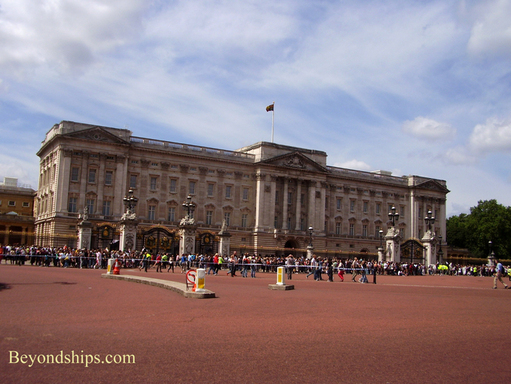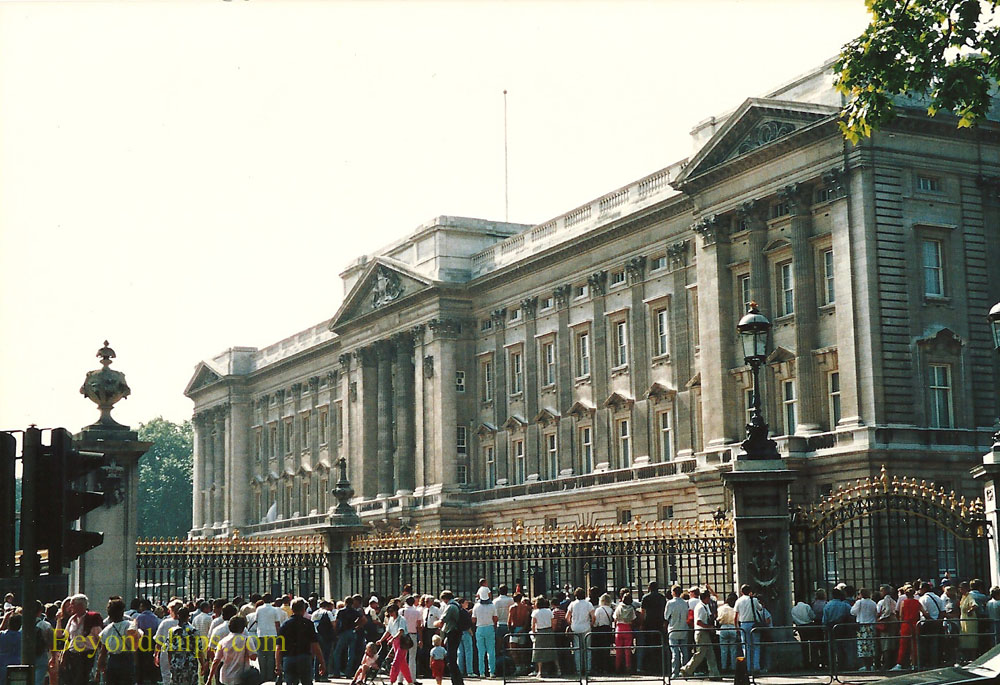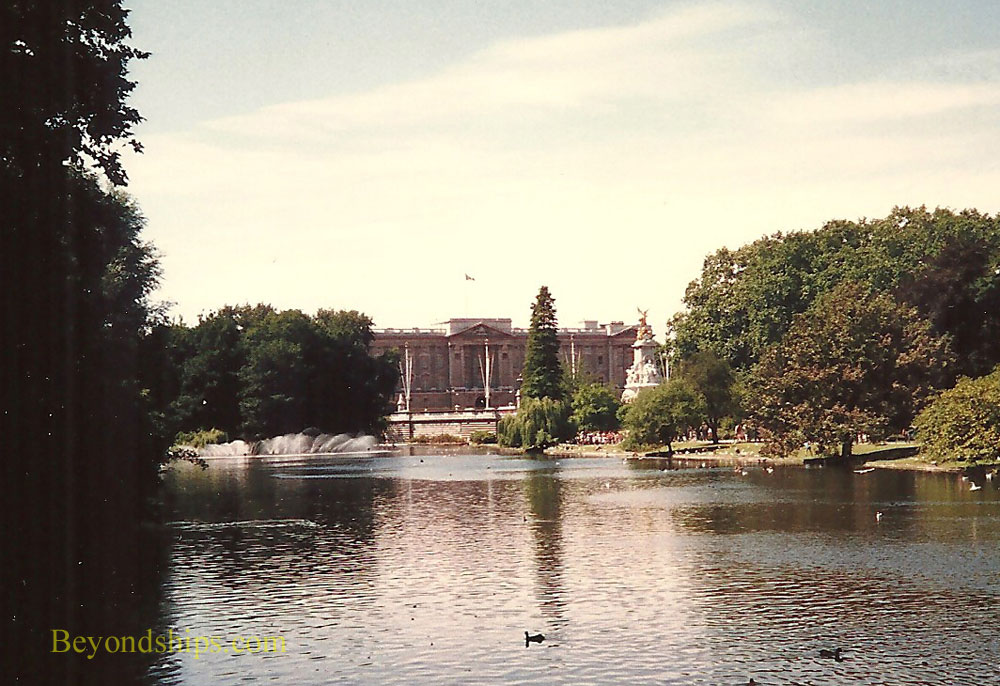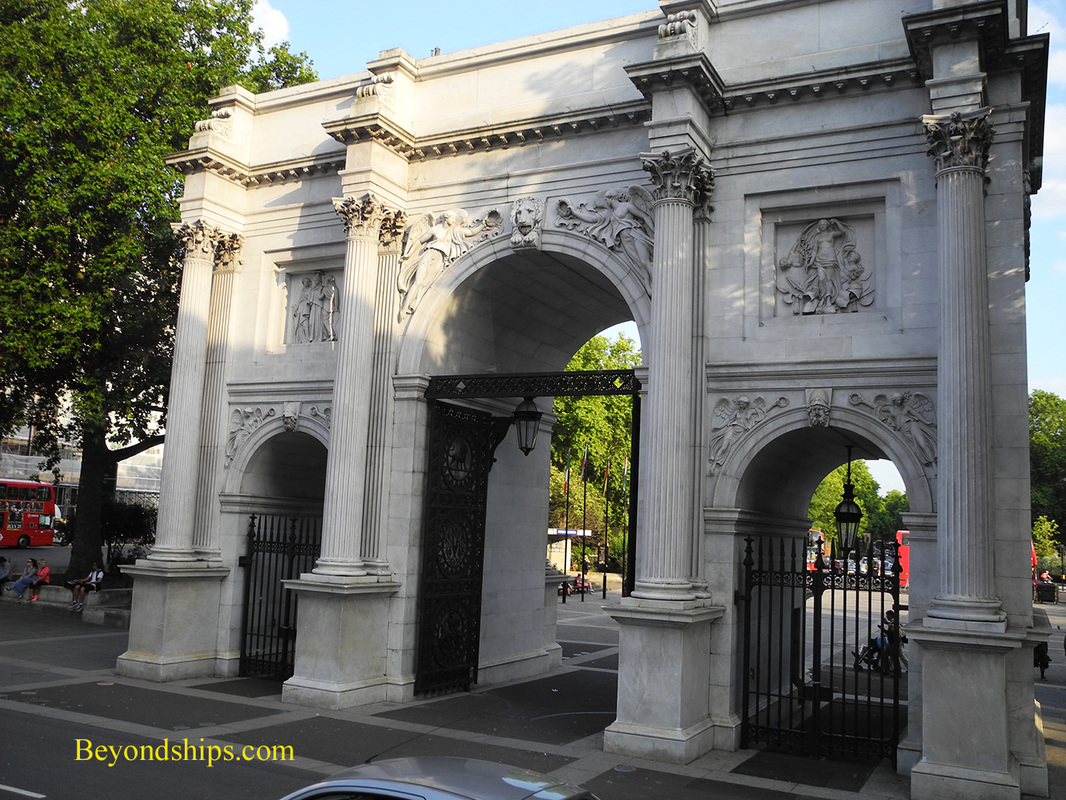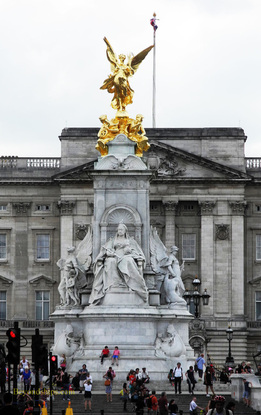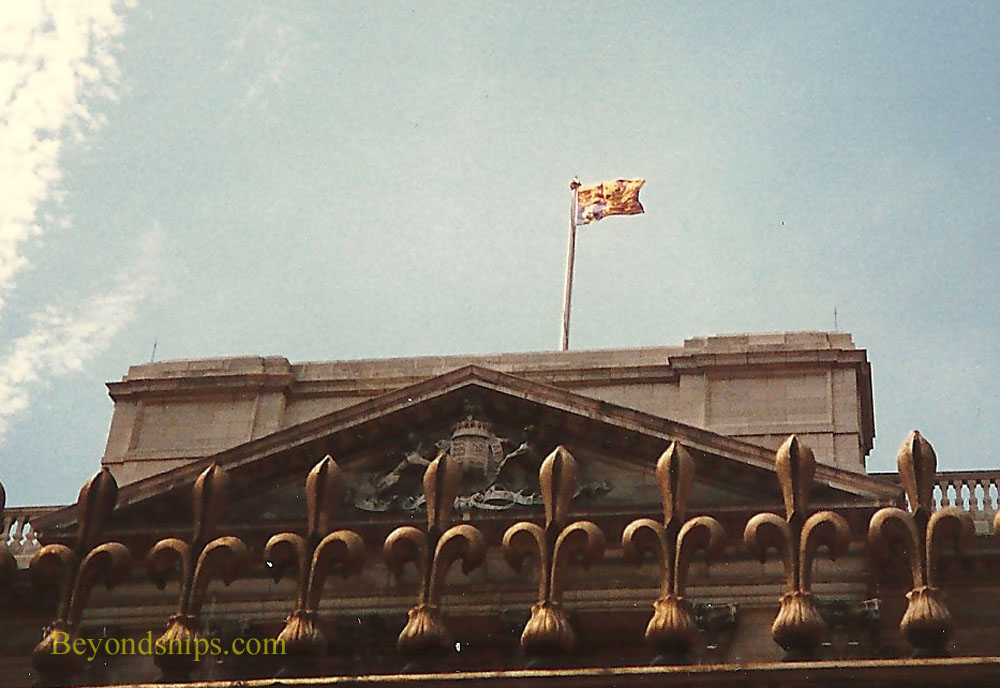|
CRUISING TO ENGLAND:
VISITING BUCKINGHAM PALACE by Richard H. Wagner |
Buckingham Palace series
Buckingham Palace The State Rooms Changing of the Guard The Queen's Gallery The Royal Mews |
Introduction
|
Buckingham Palace is perhaps the best known palace in the world. It is included in every commerical sightseeing tour of London and it draws thousands of visitors each day, many of whom just stare through the iron railings at the sentries posted in front of the building.
Located in Westminster, the Palace is the official residence of the monarch and the administrative headquarters of the monarchy. Not only is it the London home of Queen Elizabeth II and the Duke of Edinburgh but in its 92 offices, the staff work to support their day-today activities including investitures, meetings with government officials and foreign heads of state, receptions, banquets, royal visits and other activities. Buckingham Palace is also a nationl rallying point as illustrated by the crowds that gathered there to celebrate the end of World War II, royal weddings and jubilees. The Palace has 770 rooms including 19 State Rooms and accommodations for the Royal Family and 108 staff bedrooms. Its grounds include the largest private garden in London, complete with its own lake. |
While Buckingham Palace is very much a place where people are working, it does offer things for visitors to see and do. The most popular activity is to watch the soldiers who guard the Palace perform the ceremony of the Changing of the Guard. Two months a year, the State Rooms of the Palace are open to the general public. Open all year are the Queen's Gallery, where works from the royal art collection are exhibited, and the Royal Mews, where the horses, carriages, and limousines used on state occasions are on view.
|
The Story of Buckingham Palace
Cruise destination guide - England - London - Buckingham Palace - Introduction and History
